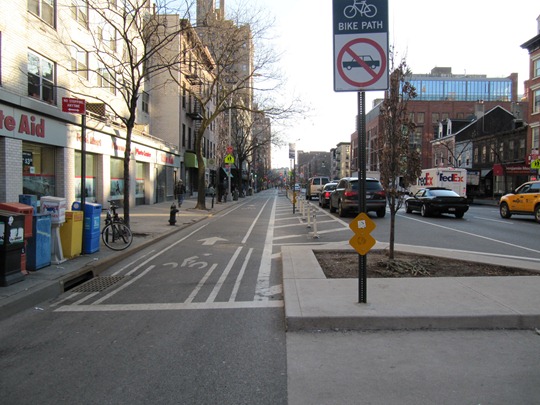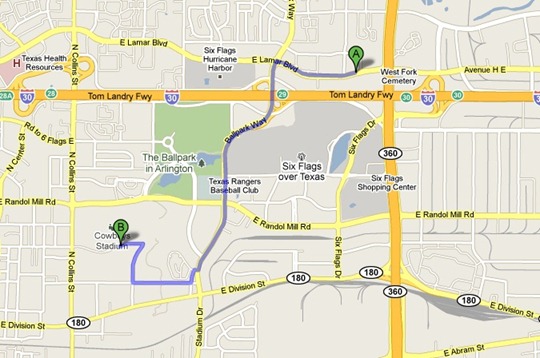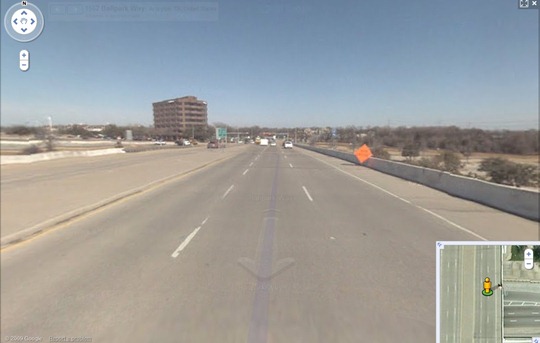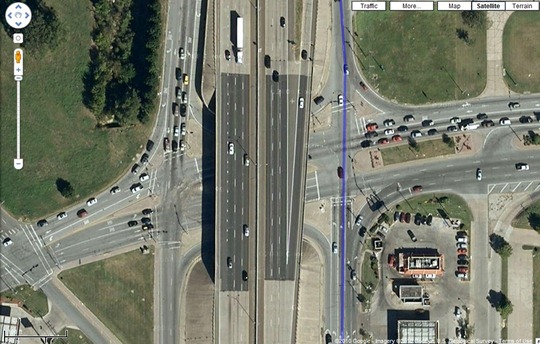Photo by James D. Schwartz / The Urban Country
In an important announcement last week, the United States Department of Transportation (DOT) has said “the establishment of well-connected walking and bicycling networks” will be part of all federal-aid transportation projects.
The announcement came out in the form of a Policy Statement that was signed on March 11th and officially announced on March 15th at the National Bike Summit by Transportation Secretary Ray LaHood.
The announcement quickly spread to the mainstream through the Wired article “Feds Deem Pedestrians, Cyclists and Motorists Equals”.
What does this mean for American cities?
It means anytime the Department of Transportation provides federal funding for infrastructure, they will assess whether the new infrastructure accommodates cyclists and pedestrians – as well as motorists – a drastic change from history where motorist needs were the primary consideration and pedestrians and cyclists were merely an afterthought.
What has resulted from decades of ignoring pedestrians and cyclists? People are forced to drive everywhere.
In 2003, the average commute to work in the United States was 24.3 minutes each way over an average distance of 16 miles (25.6KM) (this has no doubt increased in the last 7 years).
Even as a cycling advocate, I wouldn’t expect the average person to ride a bike 25KM each way to work. Thus, it doesn’t necessarily surprise me that most people rely on their car to commute to work every day.
What does surprise (and sadden) me is the fact that people in sprawled neighbourhoods are forced to drive their car to the corner store, or to a restaurant, or to see a movie, or to visit a friend.
Why does this sadden me? Because 49% of all trips in the United States are shorter than 3 miles (4.8KM), 40% are shorter than 2 miles (3.2KM), and 28% are shorter than one mile (1.6KM).
All of these distances can easily be done on a bicycle – and walking a mile shouldn’t be a problem for an average person.
So why do people choose to get behind the wheel for these short distances?
In late October 2009, my brother, sister and I met my Dad in Texas to take him to a Dallas Cowboys football game for his 60th birthday.
We stayed at the Hilton Arlington (2401 E Lamar Boulevard to be exact). I chose the hotel because of its proximity to the football stadium – I surmised we could easily walk to the stadium in about 45 minutes.
Here’s a map with walking directions from the hotel to the stadium:
Photo courtesy of Google Maps
If you’ve ever tried to walk anywhere in suburban USA, you will know exactly what I’m talking about when I explain that we were forced to walk on the shoulder of a highway in order to cross Interstate 30 – and most of the walk to the stadium was on the shoulder of a road rather than a footpath.
Here is a Google street view of the bridge we needed to cross – with its narrow shoulder:
Photo courtesy of Google Maps
Had we stayed in a hotel on the east side of Highway 360, it would have been even worse. Google Maps gives this stern warning:
And here is the highway we would be forced to walk along:
Photo courtesy of Google Maps
No wonder people don’t walk anywhere – it’s not a pleasant experience. The roads are engineered to make it convenient to drive and all other methods of transportation are either discouraged or even banned in the case of most major freeways.
With the new Policy Statement from the DOT, this will change.
It may take another 30 years to catch up with Europe, but the federal government under leadership from Barack Obama is leading the United States to become less reliant on fossil fuels while building more livable cities.
The Department of Transportation has already shown its commitment in the work it has done in New York City by creating a new public space for pedestrians in Times Square and building segregated bicycle infrastructure along Broadway Ave.
James D. Schwartz is the editor of The Urban Country. You can contact James at james.schwartz@theurbancountry.com.
Related Articles:
- Biking The Big Apple (March 2010)
- Pragmatism Eludes Politicians (Feb 2010)
- Ignoring the Real Problem On Our Streets (Nov 2009)
- Australia Got it Wrong – Time to Roll Back the Clock? (Nov 2009)







Canada not moving forward after decades of neglect?
As harsh as you are on the Yanks, do we have a similar policy?
Canada definitely doesn’t have a federal policy that deems pedestrians, cyclists and motorists as equals.
Canada is moving forward at a much slower pace than the United States.
Bike lanes are a local issue and it seems the federal government has largely stayed away from bike infrastructure.
Montreal has seen some great improvements because of its bike-friendly Mayor, but Toronto is stifled by a largely anti-bike city council (a result of the amalgamation and suburban constituents who largely rely on their automobiles to get around).
Even though our Mayor is purportedly bike-friendly, he has failed to yield any substantial improvements in cycling infrastructure.
The US Department of Transportation (federal agency) adopted a bike plan “master plan” in 1997 which it is implementing across the country.
There is nothing of the sort here in Canada. Perhaps this is a good topic to e-mail our MPs about!
Pingback: Tensions Escalating in New York City ← The Urban Country
Pingback: xbox 360
Pingback: penis advantage
Pingback: the truth about six pack abs review
Pingback: Tiffiny Yoxall
Pingback: penisadvantage
Pingback: edu backlink service
Pingback: hostgator discount code
Pingback: how to get a free ipad
Pingback: best 55 led tv
Pingback: penisadvantage